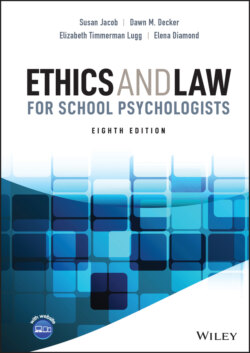Читать книгу Ethics and Law for School Psychologists - Susan Jacob - Страница 78
STATUTES AND REGULATIONS
ОглавлениеA second source of law in the U.S. legal system is statutory law. The U.S. government is composed of three parallel systems of government at the federal, state, and local levels, a form of government known as federalism (H. R. Turnbull & Turnbull, 2000). At the federal level, the Constitution is the basic law of the land. Congress is empowered to enact federal laws as long as they do not violate the U.S. Constitution. Similarly, each state has its own constitution and legislative body for enacting laws at the state level. State laws may not violate either state constitutions or the federal constitution.
Many countries have a nationalized school system operated by the central government (Hubsch, 1989). Under the 10th Amendment of the Constitution, Congress is forbidden from creating a nationalized school system. However, the U.S. Congress has the power to shape educational policy and practices by offering monies to states contingent on compliance with federal mandates. This is called categorical aid. Congress has passed two types of legislation that have had a dramatic impact on the public schools, antidiscrimination legislation and federal education legislation. Key federal statutes affecting the schools are highlighted in the paragraphs that follow.
